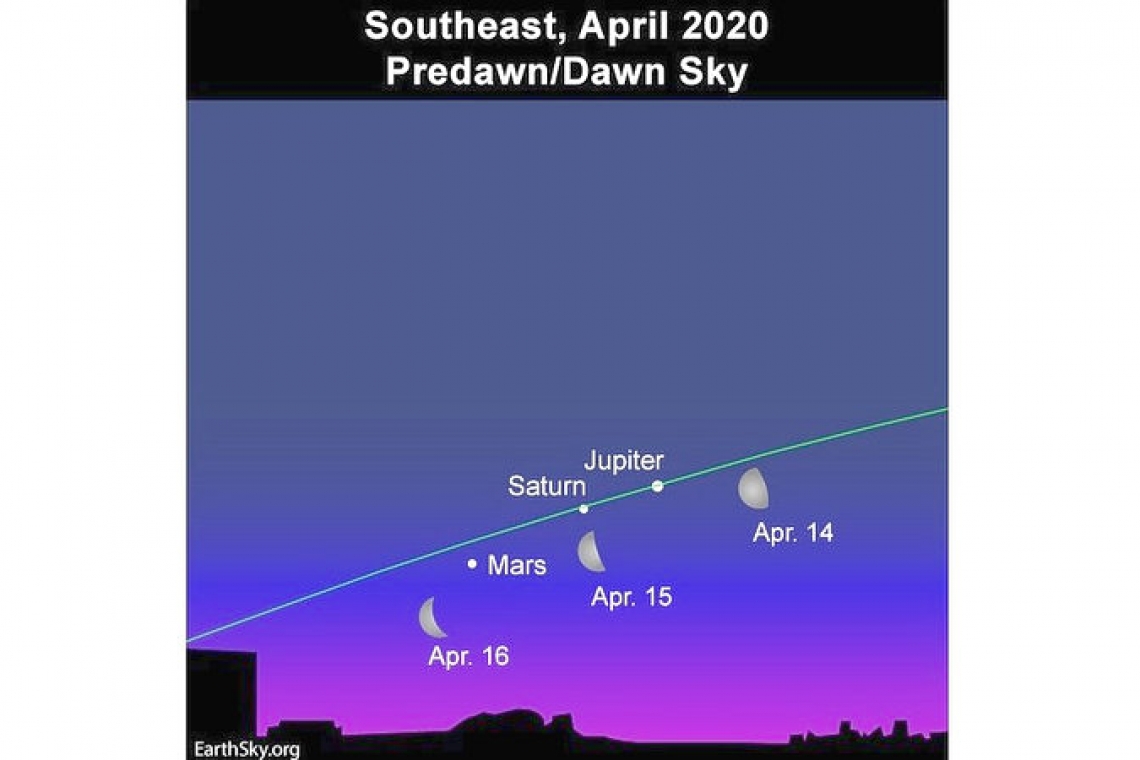Sun rises at 5:58am
Sun sets at 6:28pm
Lunar phase: second quarter, waning gibbous
Moon sets: 11:57am, Saturday
Moon rises: 10:26pm, Saturday
This period of quiet and isolation brings a lot of things into our lives. Of course we are stressed and saddened by the loss of loved ones and icons of our lives. In times of sorrow and pain, humanity has often looked to the heavens for comfort. The constancy of the stars and the predictability of the sun and the moon have been a way for people to see hope. The darkness always gives way to the light with each new dawn. So let us see something uplifting when we lift up our eyes; the night sky is there for you, bringing with it the promise of the future and the preciousness of the now.
We just witnessed a glorious full moon this past week. The first full moon of spring is known as the pink moon; although it didn't actually look pink, the pink moniker is an homage to the flowers blooming in spring. This another way to see rebirth, after the cold and death of winter comes new life.
Through this weekend and into the coming week, I hope you will find an opportunity to do some early morning stargazing. Why not? Our schedules are topsy turvy these days, and – if you are like me – an afternoon nap is in order, thus the 4:00am rising is not so crazy. And the rewards are quite surprising. You will see the moon edging to the western horizon while three planets take centre stage: Jupiter, Mars and Saturn. By Tuesday, April 14, the moon will act as a signpost, pointing its illuminated side right at this parade of planets. A true delight!
At the top is Jupiter, easily the most brilliant of the bunch, beaming many times brighter than either Saturn or Mars. Even so, Mars and Saturn are respectably bright. Mars sits at the bottom of this tight line-up, whereas Saturn is found in between Mars and Jupiter. Mars glows with a reddish light compared to the others, by virtue of its iron rich soil. Saturn has a golden hue. If you have difficulty seeing colour with the eye alone, try your luck with binoculars.
Find comfort and awe as you take in the celestial show, and know that all things pass, as they always have, as they must. Keep the faith and be safe, my friends.
Thank you for keeping up with the Night Sky articles. If you are out later on in the week, each star rises about four minutes earlier each day than written here, and the moon rises 50 minutes later. Night Sky is researched and compiled by Lisa Davis-Burnett. Earthsky.org is a key resource for information and images. Questions or comments? Email This email address is being protected from spambots. You need JavaScript enabled to view it.







